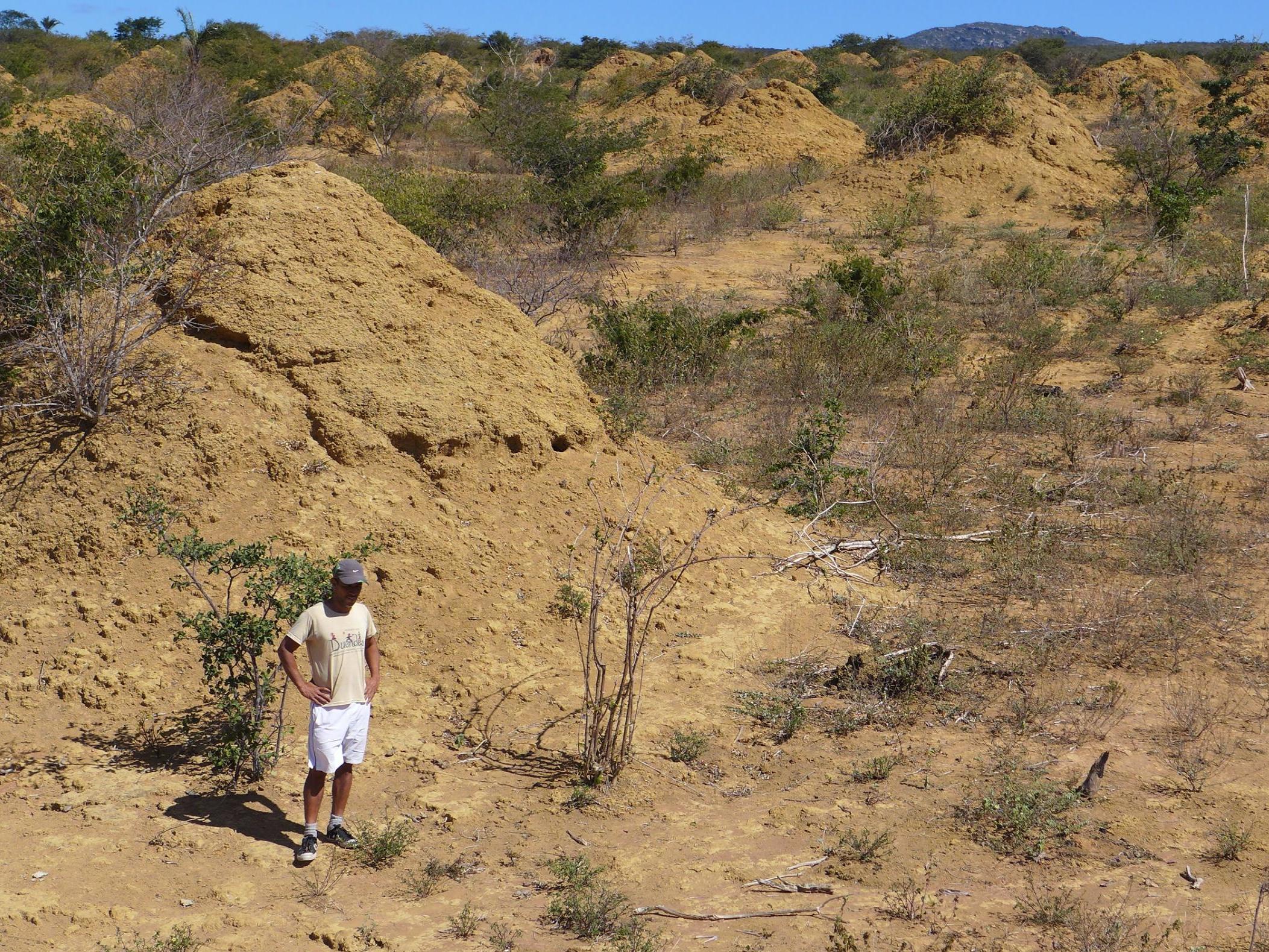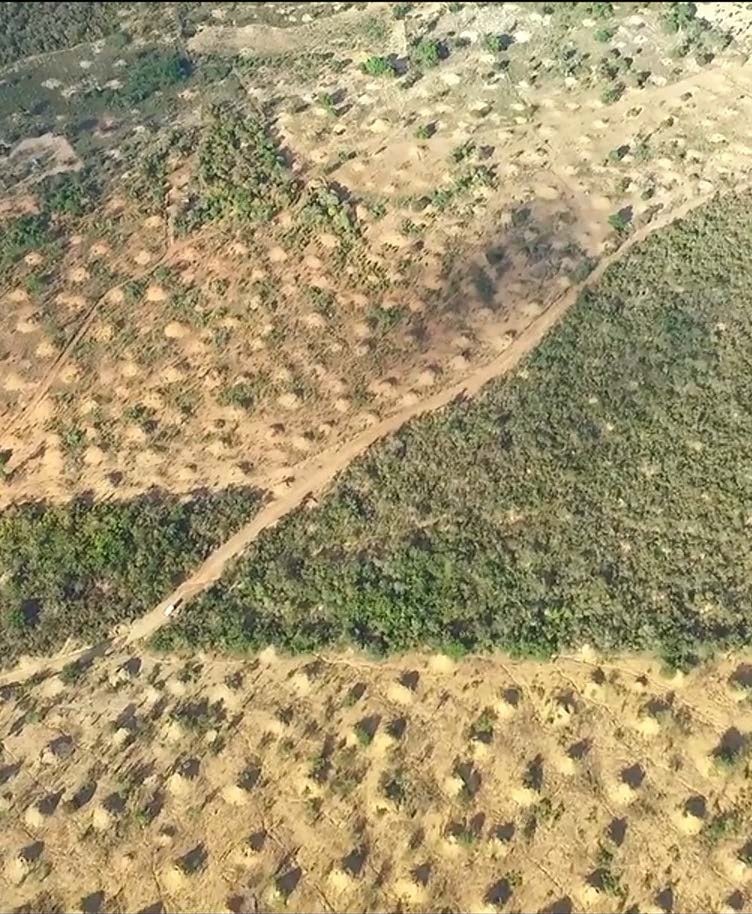Termites have been building hundreds of millions of huge mounds for 4,000 years – and now scientists know why
'Biological wonder' of 200 million mounds saw soil equivalent to 4,000 great pyramids of Giza excavated by insects

Your support helps us to tell the story
From reproductive rights to climate change to Big Tech, The Independent is on the ground when the story is developing. Whether it's investigating the financials of Elon Musk's pro-Trump PAC or producing our latest documentary, 'The A Word', which shines a light on the American women fighting for reproductive rights, we know how important it is to parse out the facts from the messaging.
At such a critical moment in US history, we need reporters on the ground. Your donation allows us to keep sending journalists to speak to both sides of the story.
The Independent is trusted by Americans across the entire political spectrum. And unlike many other quality news outlets, we choose not to lock Americans out of our reporting and analysis with paywalls. We believe quality journalism should be available to everyone, paid for by those who can afford it.
Your support makes all the difference.A termite super-colony which spans an area the size of Great Britain has been under construction since the time of the pyramids in ancient Egypt, scientists have found.
Researchers studying the vast landscape of 200 million cone-shaped mounds in northeast Brazil sampled soil from 11 locations and found that some began construction around 3,820 years ago.
At around 2.5 metres tall, 9 metres wide at the base, and spread across 230,000 square kilometres, it represents a vast earth-moving endeavour – but the mounds are not individual termite nests.
Instead, each one is a “waste point” where termite workers dump soil and other matter excavated in the production of a vast subterranean tunnel network which they have used to traverse the landscape in search of food for millennia.
The authors of a new study, published in the journal Current Biology, said the “biological wonder” was akin to those of the ancient world, but with the civilisation that built it still in residence.
“This is apparently the world’s most extensive bioengineering effort by a single insect species,” said Roy Funch of Universidade Estadual de Feira de Santana in Brazil, one of the authors of the report.
“Perhaps most exciting of all – the mounds are extremely old – up to 4,000 years, similar to the ages of the pyramids.”

The mounds are largely hidden from view by caatinga, an assortment of thorny, desert-like vegetation unique to Brazil, and were only revealed to international scientists a few decades ago as the land was cleared for pasture.
Now sampling from the oldest mounds has revealed the area is of comparable age to some of the oldest termite colony structures known to exist in Africa, while others began construction around 600 years ago.

They have developed in response to the drought-sculpted environment where the annual leaf fall is a boom time for harvesting food, punctuated by long periods where resources are more scarce.
“These mounds were formed by a single termite species that excavated a massive network of tunnels to allow them to access dead leaves to eat safely and directly from the forest floor,” said Professor Stephen Martin, a social insect expert from the University of Salford and another of the authors.
“The amount of soil excavated is over 10 cubic kilometres, equivalent to 4,000 great pyramids of Giza, and represents one of the biggest structures built by a single insect species.
“It’s incredible that, in this day and age, you can find an ‘unknown’ biological wonder of this sheer size and age still existing, with the occupants still present.”
The mounds are not the only entry points to the tunnel network – termites emerging at night to scavenge use dozens of smaller entrances between each waste point.
By inspecting mounts cut in half by road building projects, Professor Martin and colleagues also showed they lack the complex honeycomb of tunnels usually associated with a termite nest.
Instead each includes a single large central tunnel – measuring 10 cm across – connecting to the underground tunnel network and a series of horizontal “galleries” containing dead leaves or larvae.
“The tunnels are never left open to the environment, ruling out their use as a ventilation system,” which left them puzzled as to how and why they had been created at such regular intervals.
One theory is that each mound was from a competing colony, but when they transferred termites to a rival neighbouring mound they were not swarmed and attacked.
This suggests that the termites intermingle underground, sharing the tunnel network out of necessity tor collect food. However, when the test was repeated with termites from mounds 50km away the attack response was immediate, suggesting limits to their cooperation.
Shared pheromone scent cues used across the tunnel network are the key way to identify local neighbours. Professor Martin and his colleagues suggest that these scent markers may direct termites to each mound point to ensure maximum efficiency and leading to the equal spacing.
Join our commenting forum
Join thought-provoking conversations, follow other Independent readers and see their replies
Comments